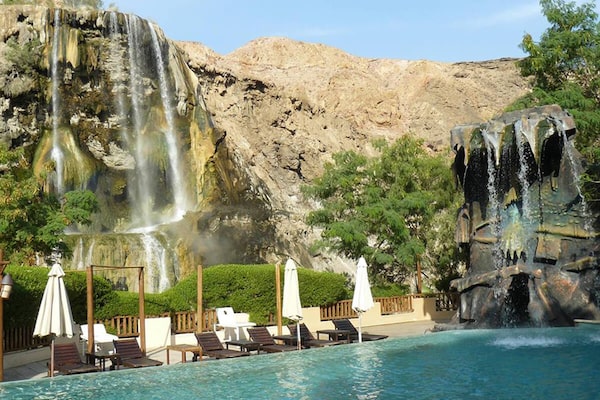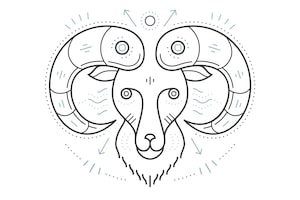How I found peace and tranquility at the Dead Sea
When it comes to health and wellness, Jordan’s Dead Sea coast is the land of the living
After too many months indoors and way too much screen-time, I needed to stretch my body and clear my mind. I wanted a new adventure and hoped for a little rejuvenation along the way. I found it all at the Dead Sea.
Jordan’s beige and blue coastline is less than an hour’s drive from Amman’s International Airport. I felt peace of mind upon entering the country when I realized that, like me, every tourist had submitted proof of full vaccination and had tested negative for COVID-19 (using a PCR test) before clearing immigration.
As I descended to the lowest place on earth, I found myself breathing easier. Down here – 430.5 metres below sea level – the air holds four per cent more oxygen than at sea level. The extreme geography also means reduced UV rays and warmer temperatures all year round, making it the perfect winter getaway.
Day one
I shook off my jet lag with a half-day hike up the narrow winding gorge of Wadi Mujib. My calm stroll up the sandy riverbed quickly turned into wading through the rushing rapids. I hiked to higher and higher streambeds, my hands sliding along the tight rock walls that reached up to the sky. As the day grew warmer, I splashed my way through the upper pools, floating on my back amidst wildflowers and chirping songbirds, feeling like I’d landed myself in some secret oasis.
The Mujib Biosphere Reserve spans an elevation of some 1,300 metres, with the same intricate geology as the red rock slot canyons of the American Southwest. Venturing into the deep, twisting passage felt less like hiking and more like marching up a biblical mountain stream.
I loved visiting the nearby Museum at the Lowest Place on Earth, which highlights the histories of past civilizations around the Dead Sea. For millennia, humans have grown their food in the rich soil and mild climate of this deepest of rift valleys. That same healthy, plant-based diet of ancient times is an everyday lunch in Jordan, topped with aromatic olive oil.
In the afternoon sunshine, the saltwater lake glowed a turquoise that hinted at the tropical, only these beaches were crusted over by otherworldly lumps of crystallized salt. Nearly ten times the salinity than the ocean, the Dead Sea is one of the saltiest bodies of water on Earth. Soaking in the mineral-rich soup helps increase circulation, hydrate the skin, reduce inflammation and joint pain. For “maximum benefit of the skin” my hotel lifeguard suggested I soak in the saltwater twice a day, perhaps at dawn and dusk.
Stepping into the Dead Sea at twilight felt like a ritual. I felt the smooth round stones under my feet, then turned around and fell backwards into the strange and viscous lake. Bobbing on the slippery surface felt magical, as if I were hovering over a puddle of blue mercury, with my ears underwater, drenched in the ancient, silent depths. I lost sense of time and merely floated, feeling weightless and light. I stayed until sunset, and gazed at the West Bank, across the glittering water. In just a few minutes, the desert sky split into a prism of pastel hues, from blue to yellow, then orange and pink.
Day two
Long before I showed up, King Herod the Great came to the Dead Sea seeking relief for his own troubling skin conditions. He built his palace at Mukawir, which stands today as a cluster of tumbledown ruins with an epic view for those willing to hike to the top.
After my panoramic hike, I followed King Herod’s example and indulged in a full spa day at my hotel. I started off with a long eucalyptus steam bath that cleared my lungs as I sweat out my pores. Once I was clean, I got muddy.
First came the invigorating full body scrub using local dates and Dead Sea salt. Then my therapist brushed me from head to toe with warm black mud and wrapped me tightly in a heated quilt. Scrubbed, muddied, and bound – I was left in the dark “to cook”, it seemed, and to sweat out a few more pounds of water weight.
For a good half hour, I felt like one of the Egyptian mummies preserved in the mineral mud collected from the Dead Sea. The black mud is said to be wondrous for healing sore joints, removing toxins while infusing minerals into the skin. Once I had rinsed off and cooled down, I lay down for a 90-minute massage that left me dozing in a state of bliss.
After a light vegetarian dinner, I went back to my room and slept for nine hours. I felt great.

Supplied
Day three
“Take it easy” was my mantra for my final day. Feeling much less stressed and whole lot healthier, I went to soak once more, this time in the warmth of the nearby Ma’in Hot Springs. Bubbling up from a beautiful oasis, the naturally-heated mineral water ranges from a lovely 45° to a piping hot 60° C. My favorite aspect of the hot springs was meeting so many local Jordanian families, most of whom spoke English and were thrilled to chat.
That afternoon, I returned to the spa for a facial with olive oil soap and a lot more Dead Sea mud. As my therapist promised, my skin felt much smoother afterwards, not to mention firmer. My face felt clean and new, and the dark circles were gone from under my eyes. Best of all, I looked as well-rested as I felt.
I took one last dip in the Dead Sea before leaving. I wanted to remember the soft horizon, capture the glistening warmth and vitality of the place, and try to carry it home with me. It’s an energy I still hold onto – plus a bit of salt and sunshine, to tide me over until the next time.
To learn more about Jordan’s Dead Sea adventures, visit VisitJordan.com.
Advertising feature provided by Jordan Tourism Board. The Globe and Mail’s editorial department was not involved.



